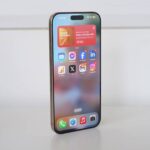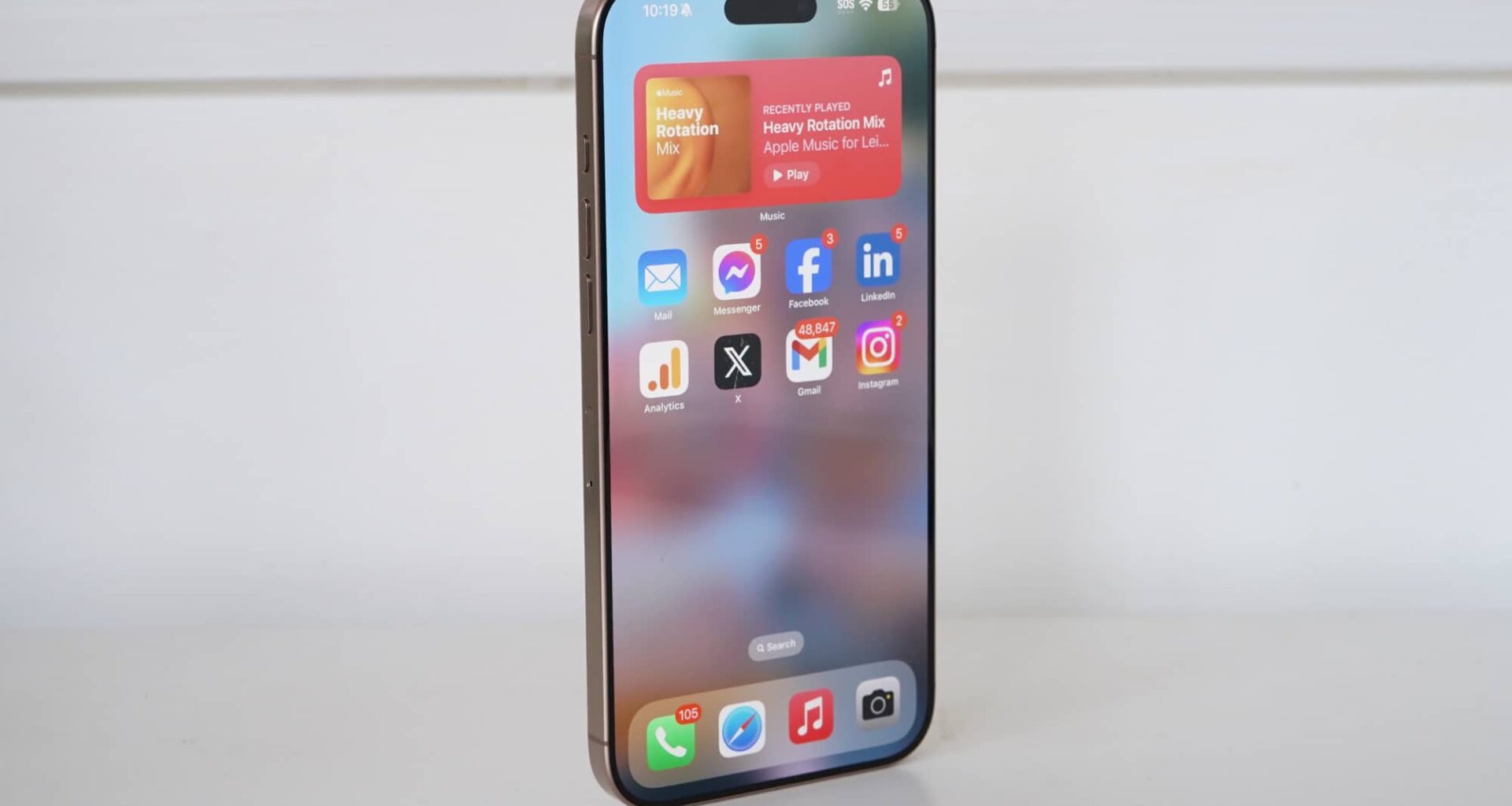Quick review
The good
The not-so-good
Another year, another iPhone, but this year’s big pro iPhone is even bigger than before. Is the iPhone 16 Pro Max the best big phone around?
Our pockets are only so big, but don’t tell phone makers that, because phones are getting bigger.
A large phone is good for a few reasons, one of which means giving you a big screen to consume content on, while also being able to throw in the best tech behind more physical space, but there’s another legitimate reason to go big instead of going home: battery.
Easily one of the (no pun intended) biggest complaints from phone owners today, battery life continues to be an issue that phone makers need to deal with, because the more you make a phone do, the more the battery will suffer. A larger phone can deal with this all too easily thanks to supporting a larger battery, but that’s not the only feature that can help.
Improvements to processing power and battery management also assist, helping owners get through the course of a regular day.
That’s the dream, and in this year’s big iPhone, it could also be the reality. Is the iPhone 16 Pro Max the perfect balance between big, bold, and built for the day-to-day?
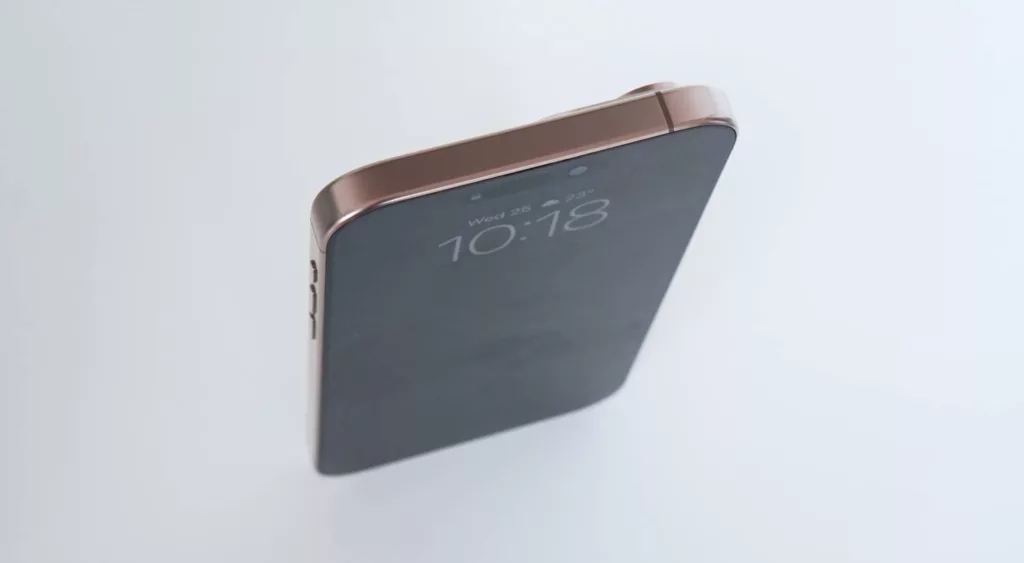
Design
Borrowing last year’s refined titanium materials on the iPhone 12 Pro Max design, the look of the latest big and premium iPhone won’t surprise, but it will delight.
Little has changed in the metal banded, glass topped and backed design. The frame appears to have a slightly different polish, but that is largely it. Measuring 8.25mm thick, the titanium 16 Pro Max is the same thickness as the previous generation, but slightly heavier by an extra six grams you’ll never notice (227g in this generation).
Our “desert titanium” colouring is as close as you’ll get to a gold iPhone this year, and it’s a sleek look, but they’re all pretty sleek as it is. It’s a little larger, too, thanks to the inclusion of a slightly bigger screen that you can see.
Apple has made one change to the design that you won’t notice: the display is now covered in a new generation of its Ceramic Shield, effectively giving you a little more scratch resistance from the first time the revamped glass technology arrived a few generations ago.

Features
The look may well be the same, but the tech inside is not, with Apple making some key changes.
For one, there’s the new Apple A18 Pro processor, a chip sporting six cores for CPU, six cores for the GPU (graphics), and 16 cores for the machine learning component representation in the Neural Engine.
You’ll find iOS 18.0 on this phone out of the box, and Apple has updated the connections on the phone, as well.
Cameras are the next big thing, using a combination of hardware to make up the three camera system. There’s a 48 megapixel main wide camera set to an aperture of F1.78 using what Apple calls a “Fusion” camera, a 48 megapixel ultra-wide set to F2.2 with support for 48 megapixel macro images, and a 12 megapixel 5X telephoto running at F2.8.
Videos can be captured at 4K from the entire system with both Dolby Vision and ProRes support on offer, spatial video capture, with slow motion capable at 4K 120fps using the Fusion camera system.
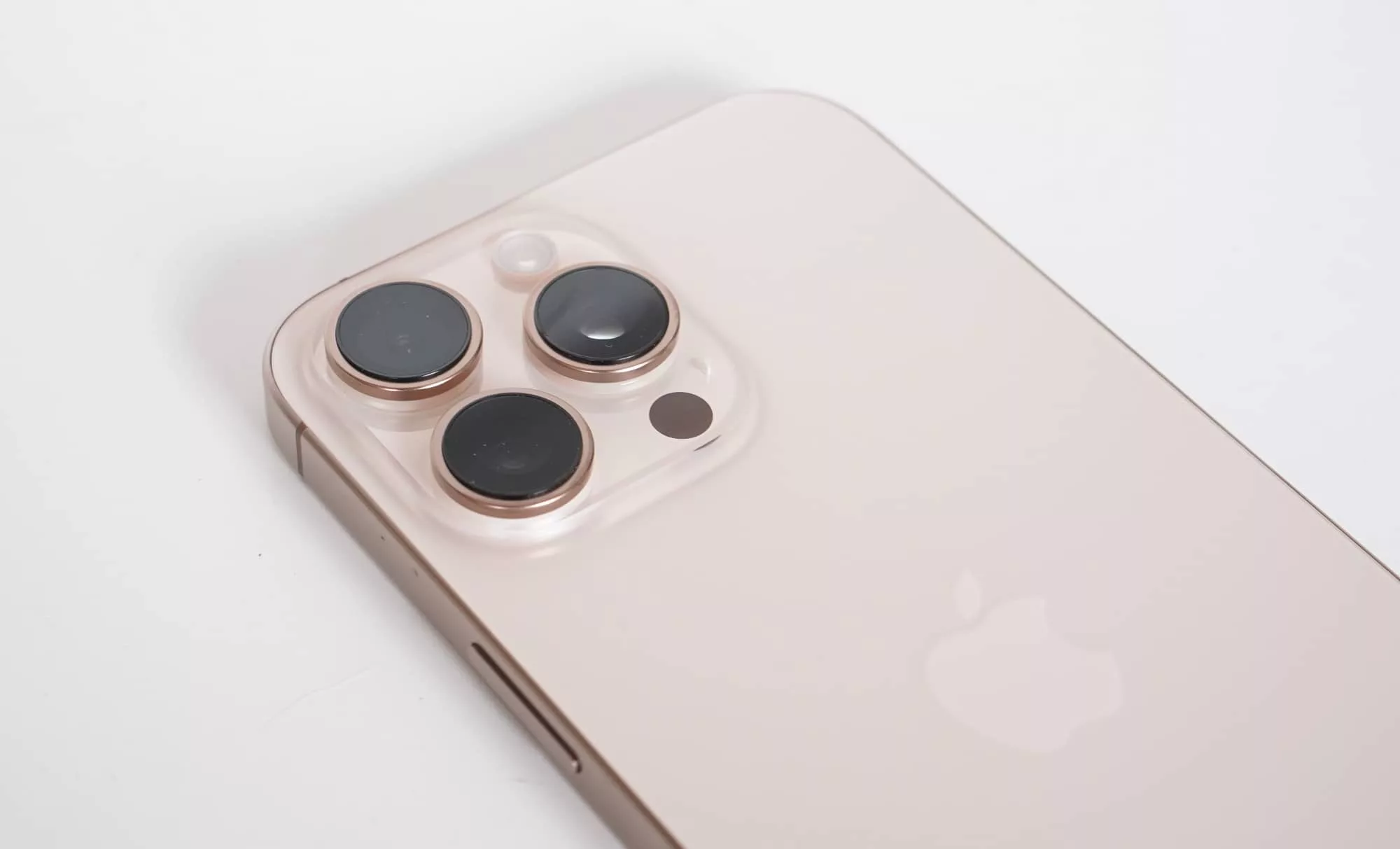
A 12 megapixel autofocus camera also sits at the front — no changes there — also with 4K video support for up to 60 frames per second, though slow motion can run at 120fps for selfies at Full HD 1080p.
Support for 5G is there, but in Australia, it’s limited to sub-6, with backwards compatibility for 4G, as well. WiFi sees an update to 802.11a/b/g/n/ac/ax/be WiFi 7, as well as Bluetooth 5.3, GPS, Near-Field Communication (NFC) largely for Apple Pay, one of Apple’s second-generation ultra-wideband chips, and even the smart home technology known as “Thread”.
There is only one physical port on the 16 Pro Max, with the USB-C port at the bottom there for charging, DisplayPort, and data transfer with up to 10Gbps using USB 3.
You’ll also find support for crash detection and satellite emergency SOS connections, IP68 water and dust resistance, while security is handled by Apple’s Face ID system in the display.
There’s also support for Apple Intelligence, though it hasn’t officially launched with the iPhone 16 Pro Max, and will be coming soon.
| Model | Apple iPhone 16 Pro Max |
| Chip | Apple A18 Pro |
| Storage | 256GB, 512GB, 1TB |
| Display | 6.9 inch 120Hz 2868×1320 OLED |
| OS | iOS 18.0 |
| Cameras | 48mp wide F1.78, 48mp ultra-wide F2.2, 12mp 5x telephoto F2.8 |
| Connections | 5G (sub-6), WiFi 7, Bluetooth 5.3, GPS, NFC, USB-C |
| Size/Weight | 8.25mm, 227g |
| Price | Starting from $2149 AUD |
Display
Then there’s the screen, which is a little bigger overall than what we saw last year. The 6.7 inch display has jumped up a full 0.2 inches, becoming a 6.9 inch OLED running a 2868×1320 resolution.
It also includes the ProMotion 1 to 120Hz refresh rate we’ve seen for a couple of years now, allowing the screen to stop down to as low as 1Hz when on standby, but also making animations super slick.
You’ll get the island display like last generation, with its clever little animations and extra button-like interface. It’s a style of the punch hole display we’ve really gotten into in recent years, particularly because of that ability to act as a shortcut, making it that much more useful than just a hole for the camera. There’s a gimmick there, sure, but it’s a gimmick that works.
And it’s like that with the rest of the screen, which is big, bright, and about as clear as it gets.
It’s such a great screen. You just get a little more of it in this year’s generation.
In-use
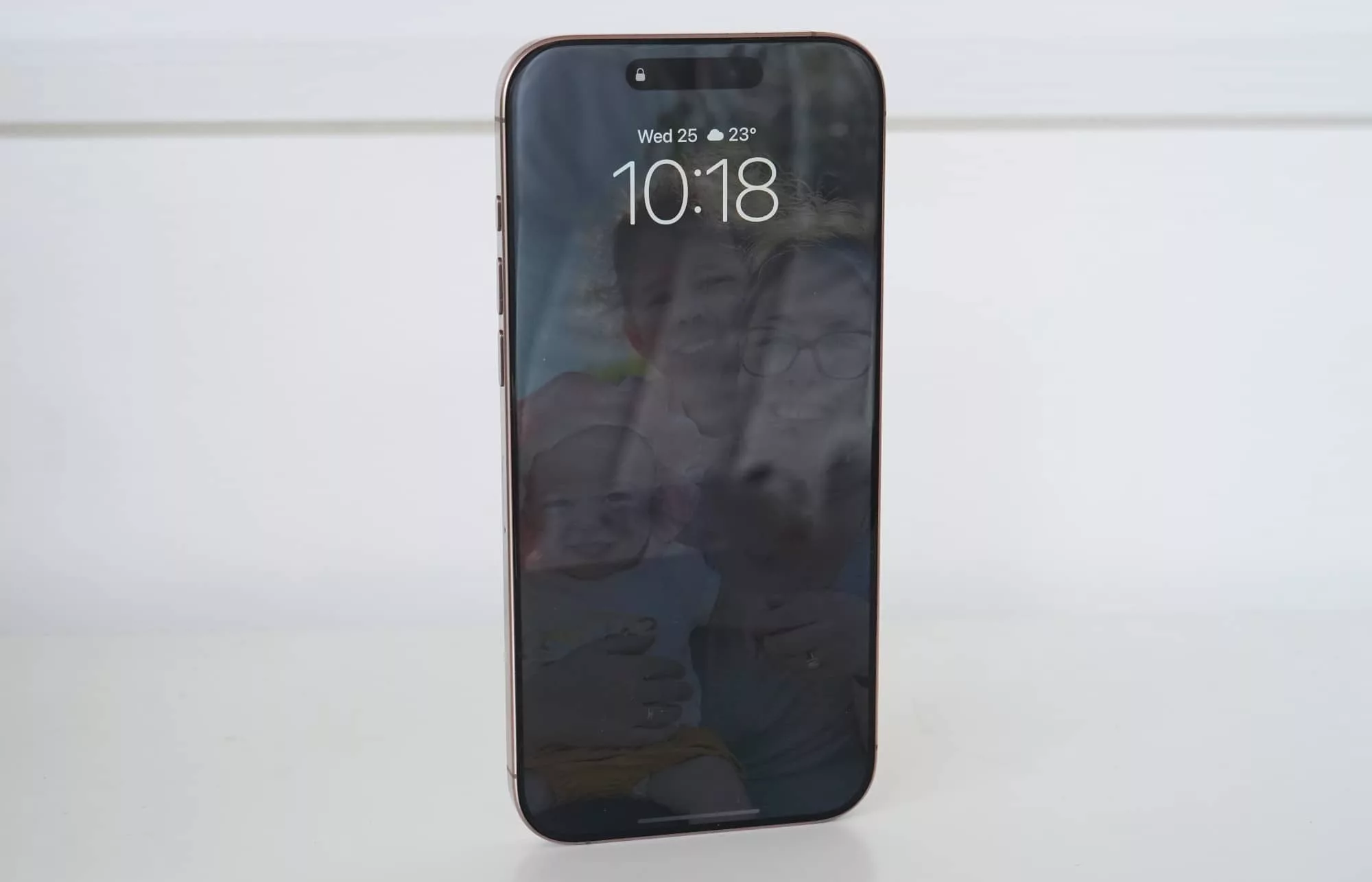
Using the iPhone is more or less the way it has been for the past few years, albeit with a couple of changes.
For starters, the action button on the left edge is there from last year, an extra that will be used as the mute switch by default, but can be mapped to other functions if needed.
Apple has also added a “camera control” button and slider, too, something we first saw on the iPhone 16, and it gives you that little bit extra for the camera. As the name suggests, it is a literal take on controlling your camera. There’s a button that acts a little like a touchpad allowing you to slide your finger back and forth with haptic feedback, while squeezing triggers the function, such as a focus lock or firing the shot, dependent on the weight of your touch.
Everything else is par for the course with Apple, though iOS 18 has some changes: you’re not forced to use shortcuts and apps in a fixed grid, icons can be both light and dark, the power control screen has more options, and so on. Apple’s mobile operating system is the best it has ever been, accommodating features Android folks have come to love for years like the grid control.
Performance
Armed with a new chip, the A18 Pro, Apple has one of the most formidable processors graced in a phone prior, with hardware that is leaps and bounds ahead of the competition.
Synthetic benchmarks put the iPhone 16 Pro Max ahead of every other big iPhone model we’ve seen prior, and even show a sizeable leap across the board pretty clearly.
The 16 Pro Max is getting a minimum of twice the performance of the 12 Pro Max, with the graphical power closer to being four times the level.
Meanwhile, the iPhone 16 Pro Max also shows plenty of guts compared to the bigger Android models it’s also technically competing with. Comparing the Pro Max to the likes of the Google Pixel 9 Pro XL and Samsung’s Galaxy S24 Ultra, and Apple has a clear lead.
Making comparisons between an iPhone and Android models is an almost literal interpretation of apples and oranges (Apples and Androids, actually), but the results are still really interesting all the same.
In the world of 4G and 5G, you should see decent speeds, too, though your mileage may vary based on network factors. Testing the 16 Pro Max on Telstra’s 5G network by way of Mate in Sydney revealed speeds as high as 128Mbps in our tests, though you will hopefully see better on your connection.
Long story short: there’s plenty of performance in the 16 Pro Max, with more than enough to keep you going for quite some time. You may not need to upgrade this hardware for a while, which can only be a good thing.

Camera
It’s not only the system performance that impresses. While the rear camera may look the same, Apple has made improvements.
For starters, the 48 megapixel main camera now acts as a “fusion” camera system. It can capture images in 24 and 48 megapixels, and even grab 2x telephoto images at 12 megapixels by effectively cropping the sensor. There’s also a new 48 megapixel ultra-wide with better macro support capable of 48 megapixel macros, plus a third camera for 5x optical 12 megapixel images.
The whole system effectively covers 0.5X to 5X, which is the way it has been for the past year, but the camera does appear to be updated and improved, particularly with regards to up close macro images, which are just lovely.
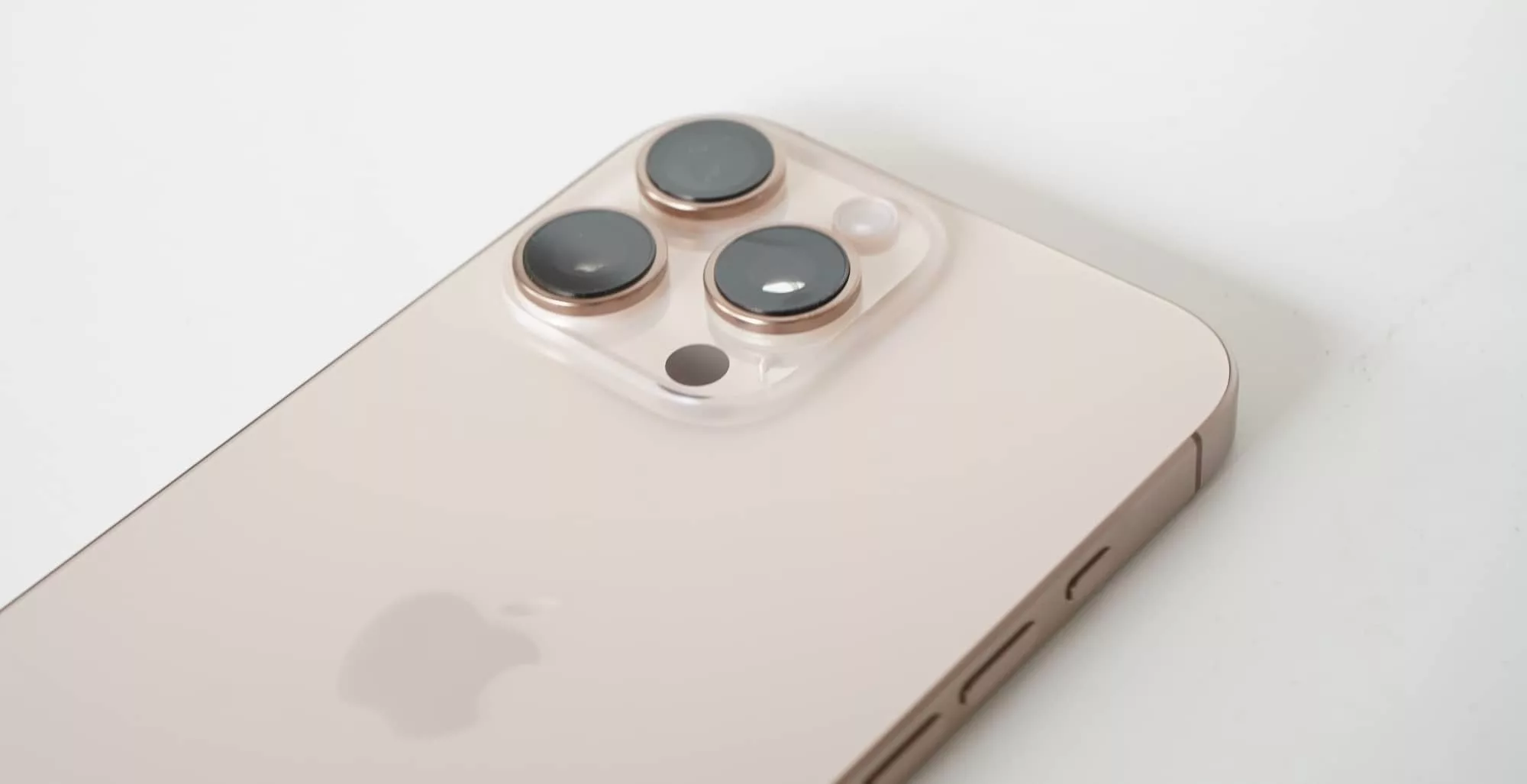
Whatever you capture, you’ll find an ability to capture sharp and clear photos, and even change the automatic colour profile of the iPhone camera, allowing you to set colour filters to be used automatically as part of the latest generation of Photographic Styles.
It means you can capture colour images or monochrome, or even slightly faded or with a look that is mostly under your control. You can’t do a total darkroom job with everything, but you can get some pretty astounding images using the styles on offer, with some neat tweaks.
Colour or filtered, the images are a treat: they’re sharp, clear, and can rival some bigger cameras you might already rely on.


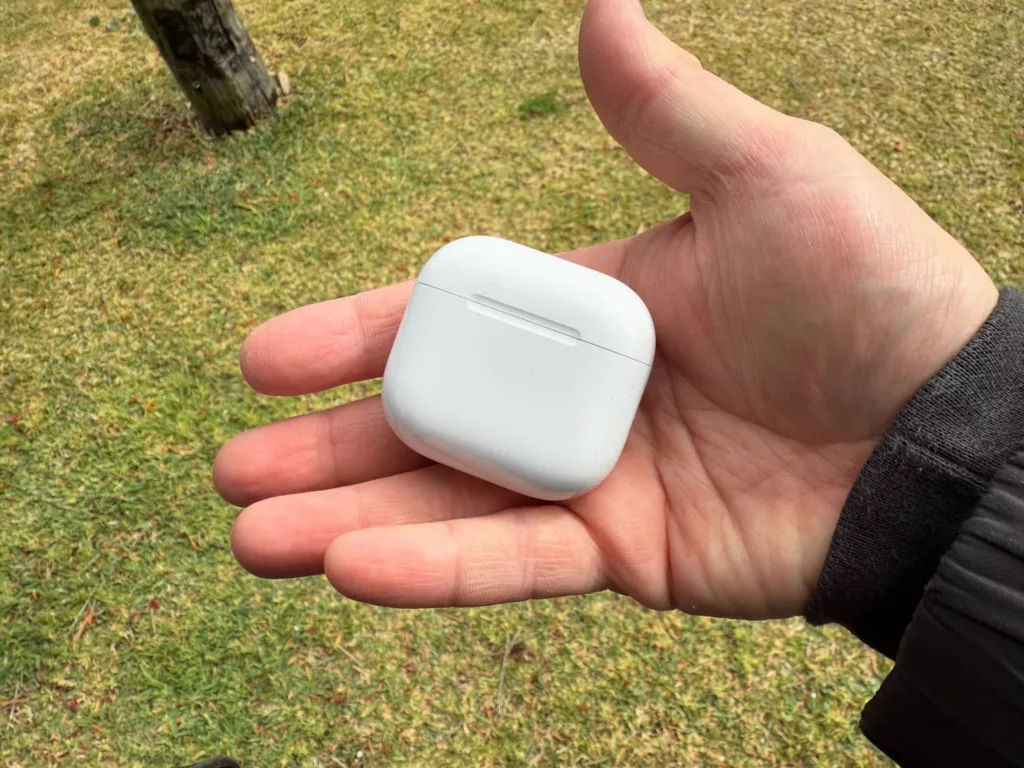

Battery
The battery also sees some improvements, achieving a good 1.5 days of life without any real dramas, at least in our tests.
Folks who lean on the screen throughout regular use will see between 6 and 7 hours of life before the 16 Pro Max needs a charge, making for seriously impressive life.
Even still, aspects of the phone and its battery can surprise you. Rather like how the recent MacBook models seemingly take forever to nudge the battery metre along, so too can the 16 Pro Max.
You’ll find as you watch videos, a good 45 minutes of chilling with a streaming program will barely nudge the screen four or five percent. That bodes well for getting more screen time than even our regular use tests provide, and can match over 30 hours of playing just videos. That may as well be black magic.

It’s impressive overall. The system is just delivering solid battery life for folks who need it.
We still suspect most owners will want to plonk their phone on a charger overnight, but with Qi2 and MagSafe both supported, not to mention fast USB-C charging, the iPhone 16 Pro Max is more or less ready to keep going when you need it. It’s great.
Value
The one fork in the road may be the price, because unsurprisingly, this is not a cheap phone. Not by any stretch of the imagination.
Priced from $2149 in Australia for the 256GB starting — and with 512GB for $2499 and 1TB for $2849 — the iPhone 16 Pro Max is certainly not inexpensive.
However, it also happens to be slightly less expensive than the 15 Pro Max last year, which started from $2199. Strangely, Apple is saving you some money this time around.
Either way, it’s not inexpensive, but typically the best in tech rarely is, so we’re not sure this is necessary a problem for value per se. If you’re looking for one of the best phones this year, you will need to spend up to get it. The iPhone 16 Pro Max is definitely that.
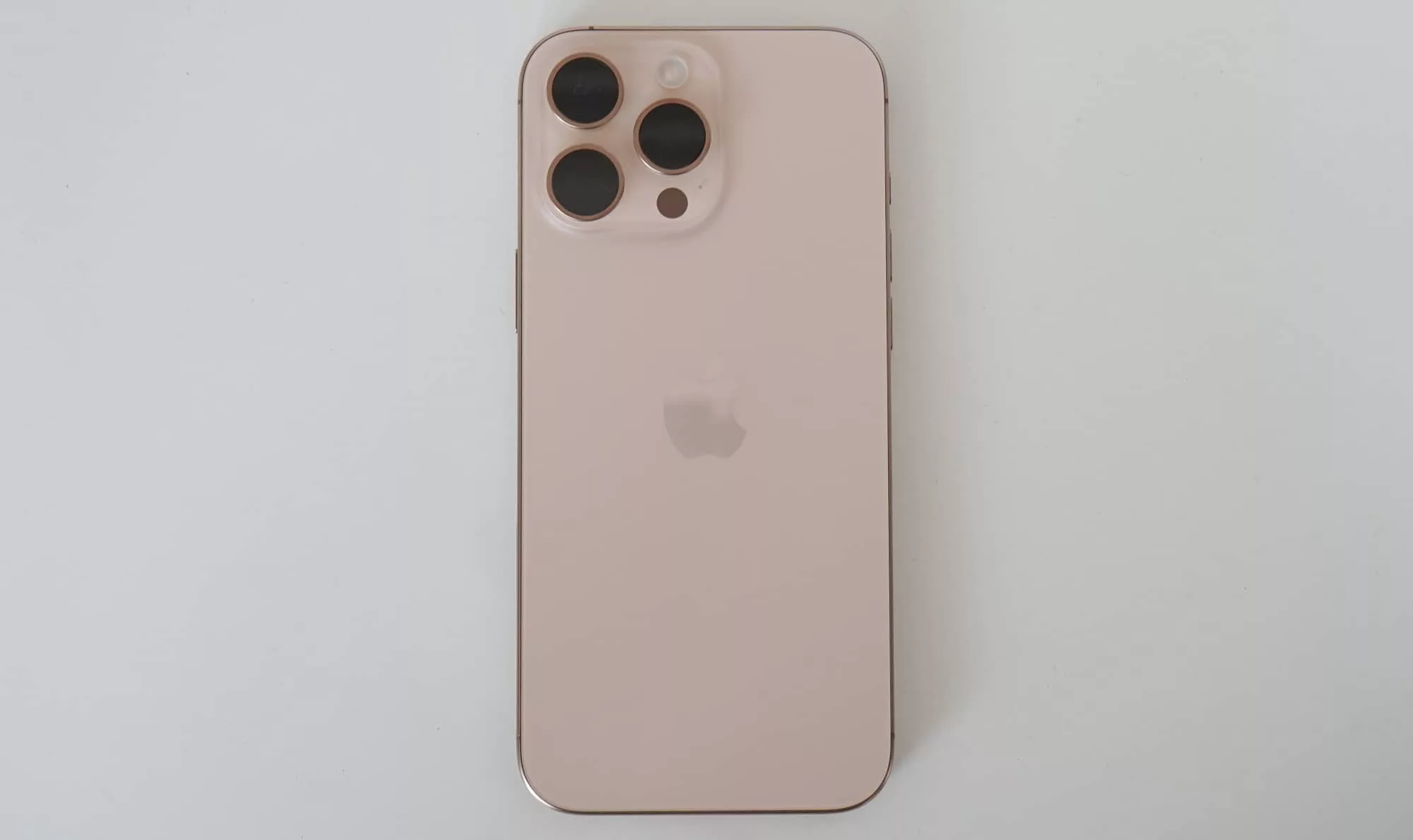
What needs work?
Going on name alone, it might seem crazy to think that we’re 16 generations into the iPhone, but Apple is actually slightly deeper. There have been a staggering 18 generations of the iPhone, meaning 18 generations for Apple to get this right over the space of 17 years.
The iPhone has been around about as long as this technology journalist has been a reviewer. Twinsies!
Unsurprisingly in its 17th year, Apple is getting a lot right. So much right that finding what’s wrong is difficult, and mostly centres around the price and the size.
We’ve already covered the first of these, but the second is important simply because the 16 Pro Max manages to be bigger than last year’s 15 Pro Max.
Apple’s jump from a 6.7 inch phone to a 6.9 inch one is sizeable enough that you may find the new model affects the space in your pocket more seriously than before. It’s big enough where it counts, and so some might just not connect with the new phone as well.
That said, we don’t believe the size is a deal breaker at all. The previous 6.7 inch models were also large, and this change may well be bigger, but it probably won’t be a dramatic change. You can adapt, and if you can’t, you can probably find the 15 Pro Max from last year, or even maybe look at the 6.7 inch iPhone 16 Plus.
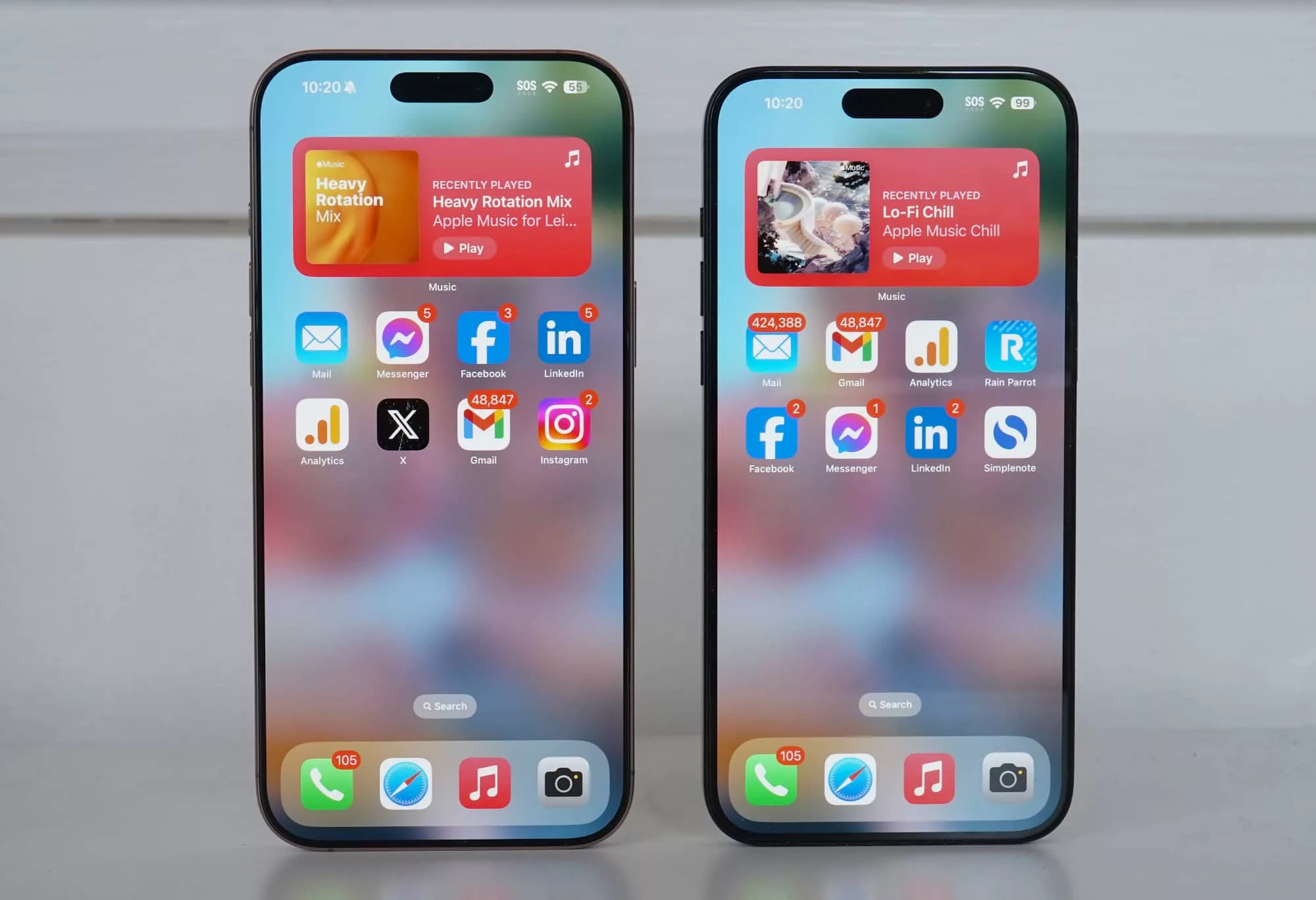
What we love
The camera on the iPhone 16 Pro Max is just so good to the point where images out of it can feel so blazingly good, you may not even look at another camera again, and we don’t just mean because of the hardware.
Apple’s focus on an improved Photographic Styles allows you to flex some creative muscle in a way that means you’re capturing the image initially the way you may want, as opposed to going back into an app and making changes in post. That’s fine, too — you can still totally do that — but with a tweaked and customised Photographic Style, you’re working from a clearer starting point every time.
Take black and white photography, an area phone cameras don’t typically excel in.
Normally, monochromatic photography sits in the category of needing a filter or two, and these are often preset with specific styles: muted tones or something slightly more contrasty.

In the iOS 18 edition of Photographic Styles, Apple is letting you dial in how much contrast you want with a square of control, literally controlling the outcome by sliding your finger around the dots in a grid. It’s easy to use and provides a direct response, and the same is true with colour filters, too.
You can tweak either — colour or monochrome — and even play with colour filters focused less on the effect applied to the image, and more to the skin tones in the image.
What’s more, iOS will save your tweaks, and allow you to capture the images that way henceforth.
You can use either the on-screen controls or the new Camera Control slider-button up top to change things, but the results are the same either way: a faster way to capture the images you want with more control.
We’re still not quite at the same level as some other apps, mind you, so things can be improved. For instance, you can’t filter the colour the way you might in a digital darkroom: there’s no way to throw a red or blue filter at the colour level, and change the way those colours would be interpreted. But it’s a definite start, and it makes a difference.



A few years ago, we wrote about the difference between taking photos on an expensive monochrome-only Leica camera and the top-of-the-line iPhone. At the time, the lens and depth of field were clear points of difference, but so too was the price: for roughly a quarter of the price of a Leica at a minimum, a photographer could get similar shots. This generation, it’s even closer again.
Of course, it’s unfair and purely academic to compare two totally unrelated devices. The iPhone isn’t a proper camera in the way a Leica is, and a Leica isn’t a phone with a camera inside.
But each can make stellar images in black and white, and this year’s Photographic Styles feature paired with the excellent image quality and solid portrait mode really makes for superb shots. We’re in love.
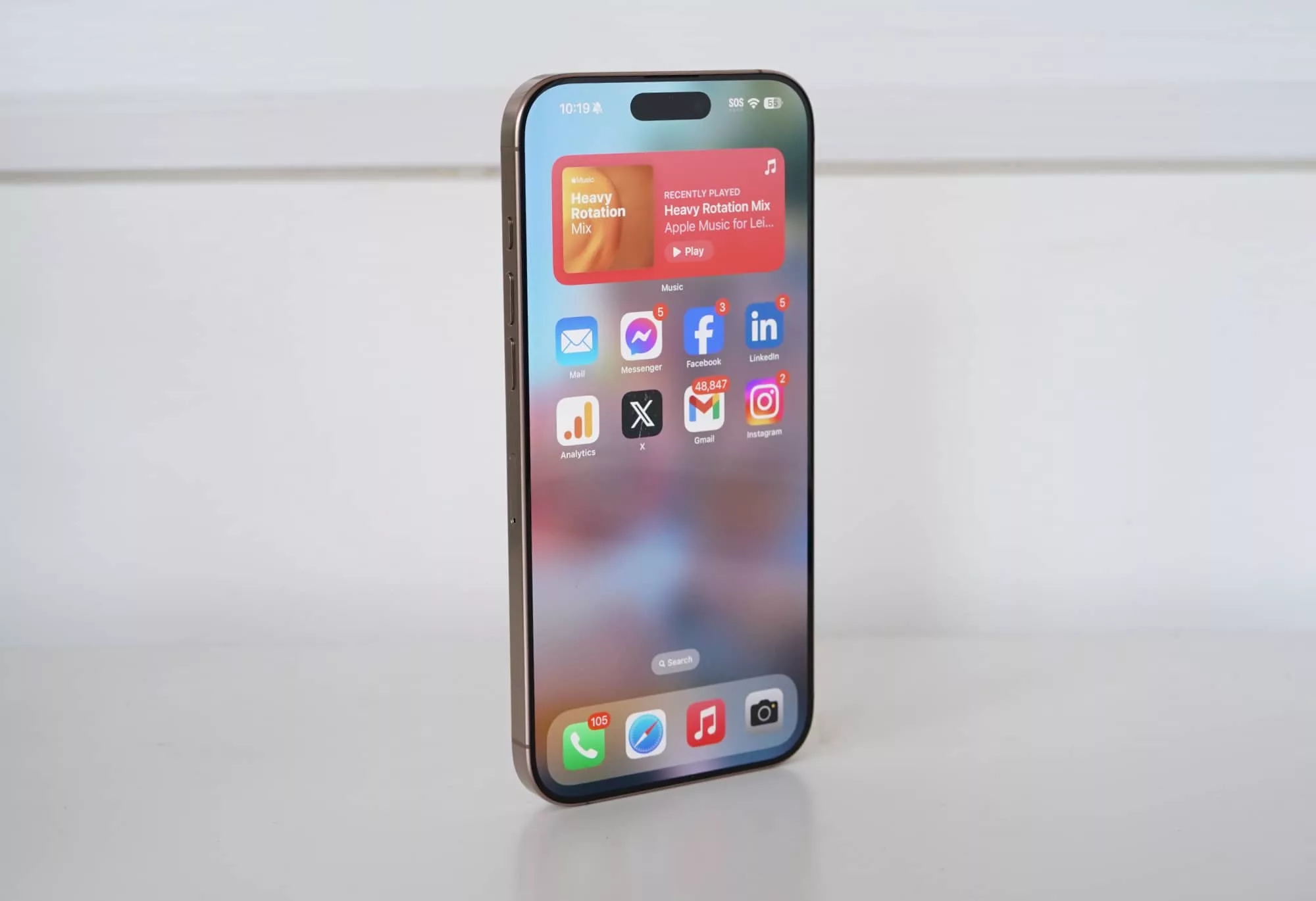
Final thoughts (TLDR)
The changes to the big and premium iPhone can seem iterative this year, but the results deliver more of what people want in a positive way. The camera is better and more capable, the screen is larger, and the battery offers plenty of life for your day to day.
The iPhone 16 Pro Max is a big and brilliant phone that’s easy to love. It could just be the most dependable gadget in your life. Highly recommended.
